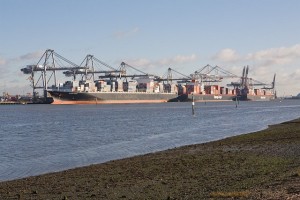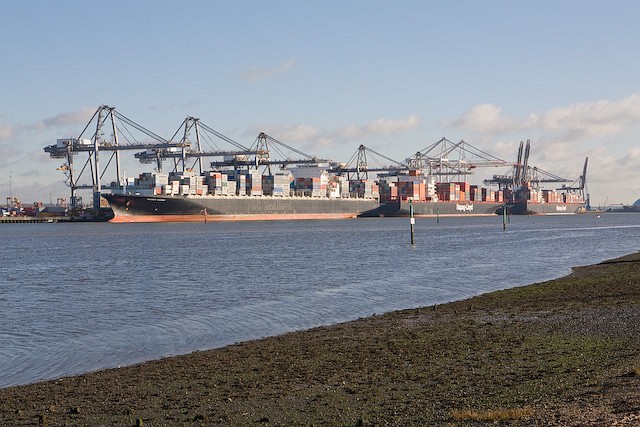 Further consolidation may be the only cure for the malaise afflicting the container shipping industry, whose shaky financial state will likely worsen in 2016, says a new report from a global business advisory firm.
Further consolidation may be the only cure for the malaise afflicting the container shipping industry, whose shaky financial state will likely worsen in 2016, says a new report from a global business advisory firm.
AlixPartners’ annual outlook finds that growing vessel supply due to the ongoing introduction of mega ships and the shriveled demand in the second half of last year have left the industry with massive overcapacity, falling profitability, and precarious cash flow levels.
At the same time, the study pointed to intensified consolidation, as was done successfully in the U.S. airline industry, as the possible salvation of the shipping industry.
“For the first time in recent memory, the container-shipping industry is seeing the beginnings of the kind of consolidation that has brought increased and sustained profitability to winning players in other industries for years,” said Foster Finley, managing director at AlixPartners and co-head of the firm’s maritime practice.
“However, further consolidation and operational overhauls will be necessary if players in this industry, which as a whole remains deeply troubled, wish to reap the kind of benefits enjoyed in other industries.”
According to the report, in part due to the continued introduction of 18,000-TEU mega ships, industry capacity globally is expected to jump by 4.5% in 2016 and another 5.6% in 2017, while demand is expected to increase just 1% to 3% this year.
Moreover, said the report, this new capacity in major trade lanes is likely to continue to distort the supply-and-demand balance globally, as the slate of vessel deliveries scheduled for 2016 and 2017 remains robust while vessel-scrapping activities remain muted.
As a result of these factors, the study found that nearly all key financial indicators for the industry have declined. Industry profits, as measured by EBITDA (earnings before interest, taxes, depreciation and amortization), fell 7% in the latest 12-month period, including a whopping 35% decline in the all-important third quarter.
Worse, cash from operations declined by almost twice as fast as EBITDA in the 12-month period—by 12%—indicating that carriers face working capital challenges, often a precursor to bankruptcy, said the paper.
It added that the industry as a whole has been in the “distress” zone for the past five years, and hasn’t been in the “safe” zone since 2007.
Thus it forecasts continued poor financial results for at least the remainder of 2016, with consolidation as recourse for companies not willing to live with the “new normal” of anemic results.
Recent multibillion-dollar mergers such as Hapag-Lloyd’s acquisition of Compania Sud Americana de Vapores, CMA CGM’s purchase of Neptune Orient Lines, and the combination of China Shipping Container Lines and China Ocean Shipping Co. are signs that “the container-shipping industry could be ripe for a long-deferred consolidation” that “could greatly benefit ambitious carriers and financial sponsors.”
As a possible model, the study pointed to the consolidation of the U.S. airline industry, also an asset-intensive industry once plagued by rampant overcapacity, cutthroat pricing pressures, complex alliances, disparate fleets and hubs, and persistent financial losses—until individual companies and financial backers finally took consolidation actions, resulting in a much stronger industry today.
Asserted the study: “In an industry now facing ‘gale-force headwinds’ and one in which everything from piecemeal cost-cutting to vessel-idling to slow-steaming has failed to yield truly transformative results, merely adhering to the status quo is likely the most dangerous strategy of all.”
“Companies with M&A [mergers and acquisitions] on their minds need to be proactive if [they] hope to reap the kind of rewards winners in consolidated industries enjoy—or to prevent becoming acquisition targets themselves,” it added.
Photo: Peter Facey





